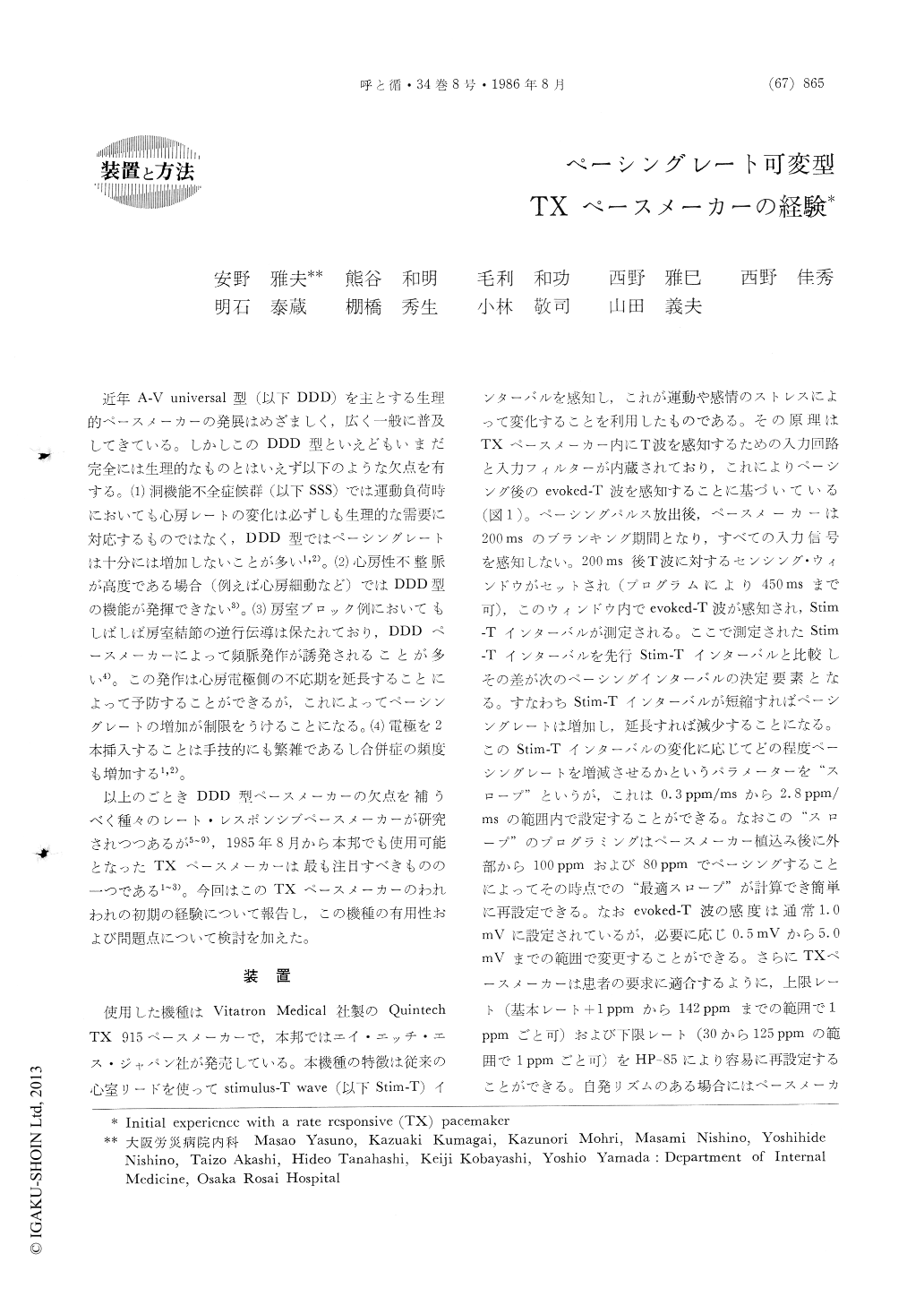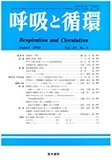Japanese
English
- 有料閲覧
- Abstract 文献概要
- 1ページ目 Look Inside
近年A-V universal型(以下DDD)を主とする生理的ペースメーカーの発展はめざましく,広く一般に普及してきている。しかしこのDDD型といえどもいまだ完全には生理的なものとはいえず以下のような欠点を有する。(1)洞機能不全症候群(以下SSS)では運動負荷時においても心房レートの変化は必ずしも生理的な需要に対応するものではなく,DDD型ではペーシングレートは十分には増加しないことが多い1,2)。(2)心房性不整脈が高度である場合(例えば心房細動など)ではDDD型の機能が発揮できない3)。(3)房室ブロック例においてもしばしば房室結節の逆行伝導は保たれており,DDDペースメーカーによって頻脈発作が誘発されることが多い4)。この発作は心房電極側の不応期を延長することによって予防することができるが,これによってペーシングレートの増加が制限をうけることになる。(4)電極を2本挿入することは手技的にも繁雑であるし合併症の頻度も増加する1,2)。
以上のごときDDD型ペースメーカーの欠点を補うべく種々のレート・レスポンシブペースメーカーが研究されつつあるが5〜9),1985年8月から本邦でも使用可能となったTXペースメーカーは最も注目すべきものの一つである1〜3)。今回はこのTXペースメーカーのわれわれの初期の経験について報告し,この機種の有用性および問題点について検討を加えた。
In this report we describe our initial experience with a new rate responsive TX pacemaker. This pacemaker system uses a conventional transvenous ventricular elect-rode, which senses the evoked T after a ventricular paced beat, as an indicator of metabolic demand. Satis-factory rate response as assessed by bicycle ergometer and Holter monitoring was achieved in 4 patients with sick sinus syndrome. In the first patient, a cardiac output was measured by a thermodilution method during the bicycle ergometer, which confirmed that an adequate increase in cardiac output was obtained by an increase of pacing rate. Our results show that physiological rate responsive pacing using the QT interval provides a simple means of increasing the heart rate and cardiac output in accordance with the patients' metabolic de-mand.

Copyright © 1986, Igaku-Shoin Ltd. All rights reserved.


